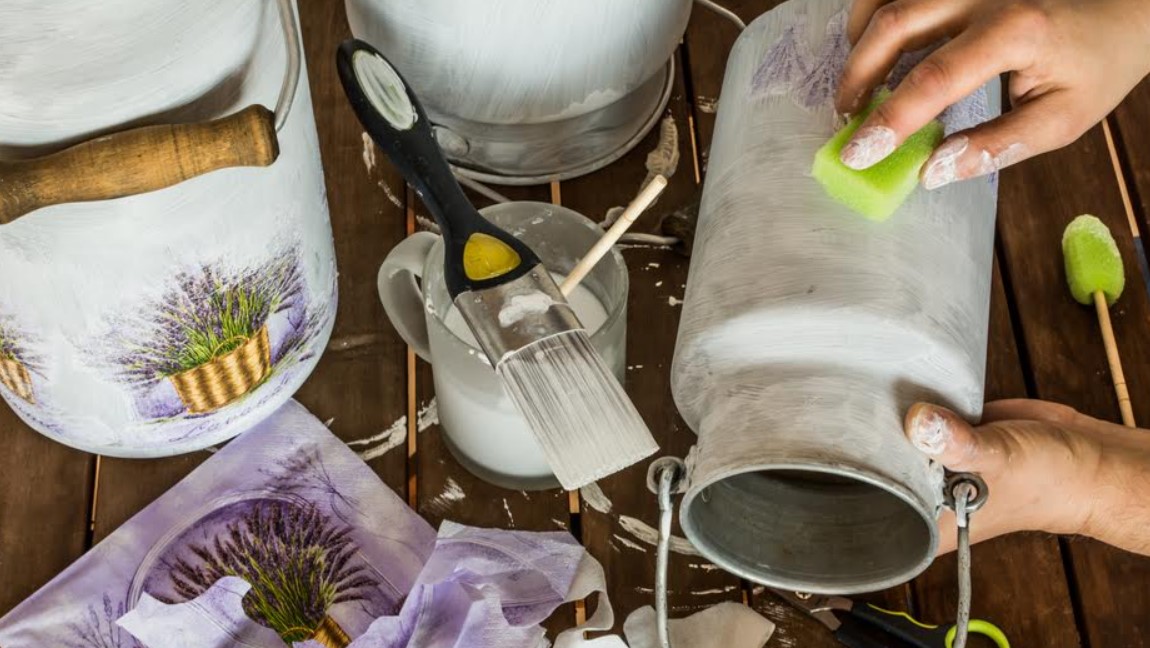You consider yourself pretty clever. You know what milk is. You pour it on your cereal every day. You also know what paint is. But when it comes to milk paint, your body of knowledge suddenly dries up. You have never heard of it except to say that all your friends now seem to be talking about it. So what’s the deal?
Milk paint is all the rage among the DIY craft crowd. It is especially popular among people who enjoy the vintage and modern farmhouse design styles. Milk paint is easy to use, environmentally friendly, and can be utilized in conjunction with other refurb strategies to create a distressed look on just about any surface.
What is milk paint made of?
Milk paint’s name is a little misleading in the sense that it might make you think that the primary ingredient is milk. That is only half true. A typical milk paint is made from milk casein (protein), lime, and sodium borate. If a color other than white is desired, natural pigments are added. For certain surfaces to which milk paint doesn’t readily adhere, a natural bonding agent can also be added.
All milk paint formulas are based on natural products. Milk paints do not contain volatile organic compounds (VOCs) or toxic chemicals, which is why they are so popular among homeowners and crafters looking to do what they do in a way that is both environmentally safe and safe for children and pets.
What does it look like?
One of the most common questions people ask about milk paint is what it looks like. At Jami Ray Vintage, a Lehi, Utah company that turns old treasures into new ones, milk paint is something they use quite frequently. It is pretty big among fans of the modern farmhouse decorating style. At any rate, Jami Ray Vintage says milk paint offers a smooth, matte finish.
Due to the paint’s milk casein, it doesn’t necessarily spread as evenly as a latex satin, semi-gloss, or gloss paint. You generally have to apply at least two coats, and sometimes three, unless you want a washed out look. And if you don’t like the matte finish, you can choose a bonding agent that leaves a more satin-like finish when it dries.
Where can you buy milk paint?
Though there are exceptions to every rule, milk paint typically isn’t sold as a liquid in a can. Instead, you find it as a dehydrated powder. You mix the powder with water and allow a few minutes for the calcium and milk casein to activate. You can store what you don’t use in a sealed jar or can.
Some find having to mix up milk paint inconvenient. Yet at the same time, you still have to stir latex and oil-based paints before you use them. So really, the only added step is having to collect the water you need to mix the paint. It is not that big a deal.
What can milk paint be used on?
Just about anything you would paint with latex or oil-based paint is a candidate for milk paint. More often than not, it’s used to refinish old furniture and decorative items. Theoretically, you could paint your walls with it. That may not be the best idea from a budget standpoint. Milk paint is quite a bit more expensive than entry-level latex paint.
Everyone is talking milk paint these days. People love it because it is an environmentally friendly paint that creates a worn and washed-out appearance that can make even modern furnishings look old and distressed.

